Green finance plays a crucial role in promoting sustainable development and addressing environmental challenges. It involves the use of financial products and services to support projects that have positive environmental benefits. As the world increasingly recognizes the need for sustainable practices, the demand for green finance has been growing rapidly. In recent years, blockchain technology has emerged as a potential game-changer in the field of finance, offering new opportunities for innovation and transparency.
Green Finance and its Importance for Sustainable Development
Green finance refers to the financing of projects and activities that promote sustainable development and have positive environmental impacts. It encompasses a wide range of financial products and services, including green bonds, sustainable loans, and impact investments. The main objective of green finance is to mobilize capital towards projects that contribute to climate change mitigation, adaptation, and other environmental objectives.
The importance of green finance cannot be overstated. Climate change and environmental degradation pose significant risks to economies and societies worldwide. Transitioning to a low-carbon and sustainable future requires substantial investments in renewable energy, energy efficiency, sustainable agriculture, and other green sectors. Green finance plays a crucial role in channeling funds towards these sectors, helping to drive the transition to a more sustainable and resilient economy.
Blockchain Technology and its Potential in Green Finance
Blockchain technology, often associated with cryptocurrencies like Bitcoin, is a distributed ledger system that enables secure and transparent transactions without the need for intermediaries. It has the potential to revolutionize various industries, including finance, by improving efficiency, transparency, and trust.
In the context of green finance, blockchain technology can provide several benefits. Firstly, it can enhance transparency by providing a tamper-proof and immutable record of transactions. This can help ensure that funds allocated for green projects are being used as intended and that the impact of these projects can be accurately measured and verified.
Secondly, blockchain can increase efficiency by streamlining and automating various processes in green finance. For example, it can simplify the issuance and trading of green bonds, reducing costs and increasing accessibility for investors. It can also facilitate the tracking and verification of renewable energy certificates, making it easier to prove the origin and impact of renewable energy generation.
Lastly, blockchain can enhance trust among stakeholders in green finance. By providing a decentralized and transparent system, it can reduce the need for intermediaries and increase the credibility of transactions. This can help attract more investors to green projects and foster collaboration between different stakeholders in the green finance ecosystem.
Introducing GreenVest Finance: Empowering Sustainability Through Innovative Financial Solutions
GreenVest Finance is a prominent financial institution leading the way in the realm of sustainable finance. Committed to driving positive environmental change, GreenVest Finance specializes in providing cutting-edge financial solutions that support and accelerate the transition to a greener economy.
At the heart of GreenVest Finance’s mission is their dedication to offering a diverse range of green financial products and services. They provide eco-friendly loans, green mortgages, and sustainable investment portfolios that cater to the needs of businesses and individuals seeking to align their financial goals with their environmental values. By providing accessible and tailored financing options, GreenVest Finance empowers clients to undertake sustainable initiatives, such as renewable energy projects, energy-efficient upgrades, and environmentally conscious business expansions.
GreenVest Finance actively engages with businesses and organizations that prioritize sustainability, promoting knowledge-sharing and collaboration. By connecting sustainable enterprises with impact investors, GreenVest Finance plays a vital role in fostering a network of like-minded stakeholders who share a vision for a more sustainable future. Moreover, the institution actively advocates for responsible financial practices and sustainable investment strategies, encouraging businesses of all sizes to embrace environmentally responsible decisions.
With a focus on transparency and social responsibility, GreenVest Finance ensures that its financial solutions contribute positively to environmental conservation and social well-being. By combining financial expertise with a commitment to sustainability, GreenVest Finance enables its clients to make informed decisions that drive both economic growth and environmental progress.
As an industry trailblazer, GreenVest Finance continues to pave the way for a more sustainable and environmentally conscious financial landscape. With their forward-thinking approach and dedication to green finance, they are shaping a brighter future for generations to come.
Challenges of Incorporating Blockchain in Green Finance
While blockchain technology holds great promise for green finance, there are also several challenges that need to be addressed for its successful implementation.
One of the main challenges is securing and verifying green investments. Blockchain can enhance transparency, but it does not guarantee the accuracy or reliability of the information recorded on the ledger. Ensuring that green projects meet the necessary criteria and produce the desired environmental outcomes requires robust verification mechanisms. This involves integrating blockchain with other technologies, such as Internet of Things (IoT) devices and smart contracts, to monitor and validate the performance of green projects.
Another challenge is the complexity of implementing blockchain in existing financial systems. Green finance operates within a complex regulatory and institutional framework, and integrating blockchain technology into this framework requires careful planning and coordination. It involves aligning legal and regulatory frameworks, establishing interoperability standards, and addressing privacy and data protection concerns. Overcoming these challenges requires collaboration between financial institutions, regulators, and other stakeholders in the green finance ecosystem.
Conclusion
In conclusion, blockchain technology has the potential to revolutionize green finance by enhancing transparency, increasing efficiency, and fostering trust among stakeholders. The benefits of blockchain in green finance are numerous, from improving the allocation and tracking of funds to enabling new forms of sustainable investments. However, the successful integration of blockchain into the green finance ecosystem requires collaboration and coordination between different stakeholders.
As the world continues to grapple with the challenges of climate change and environmental degradation, the role of green finance becomes increasingly important. Blockchain technology offers new opportunities for innovation and transformation in this field. It is up to financial institutions, governments, and other stakeholders to embrace this technology and collaborate to ensure the success of green finance initiatives. By doing so, we can accelerate the transition to a more sustainable and resilient future.







